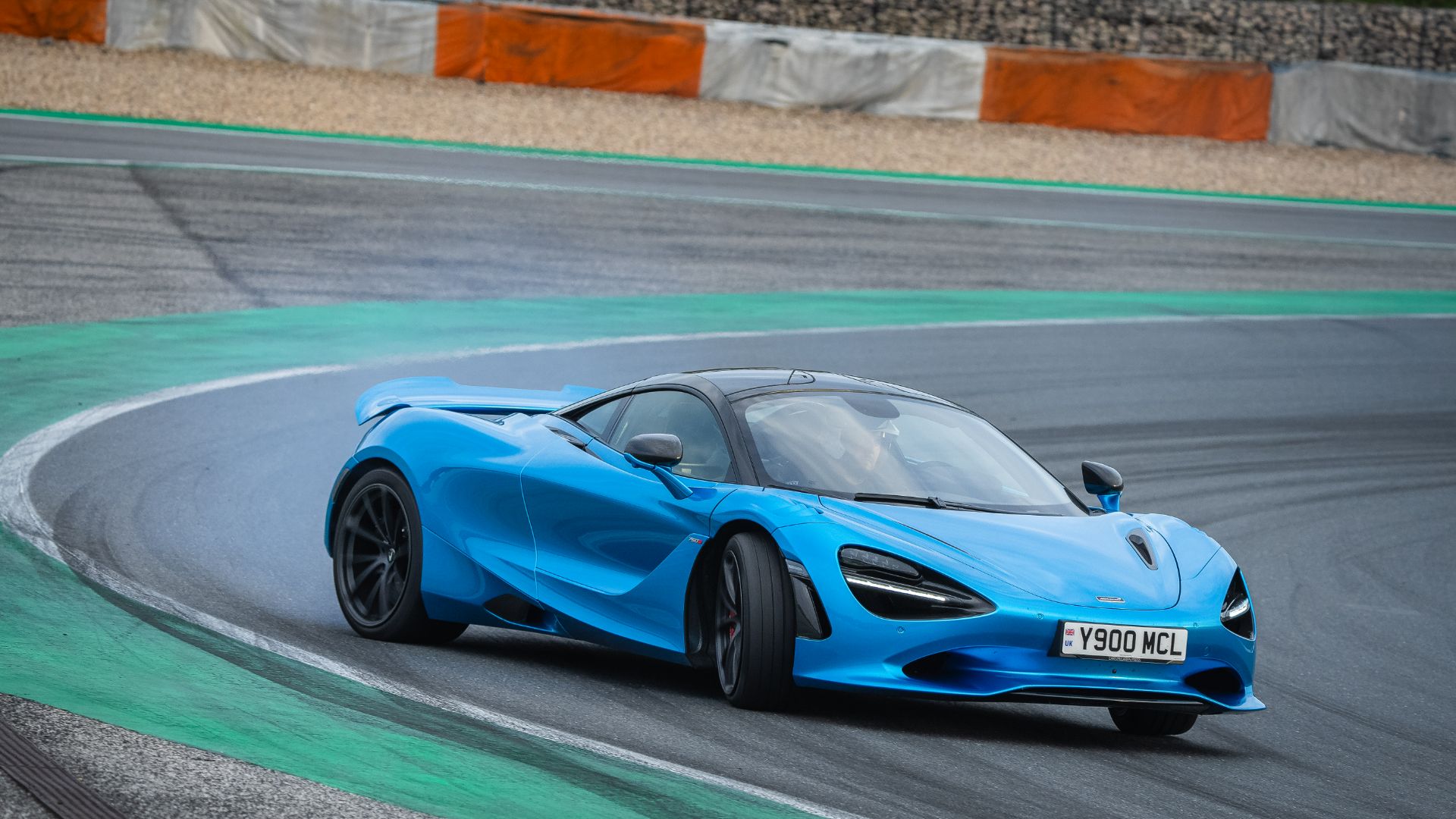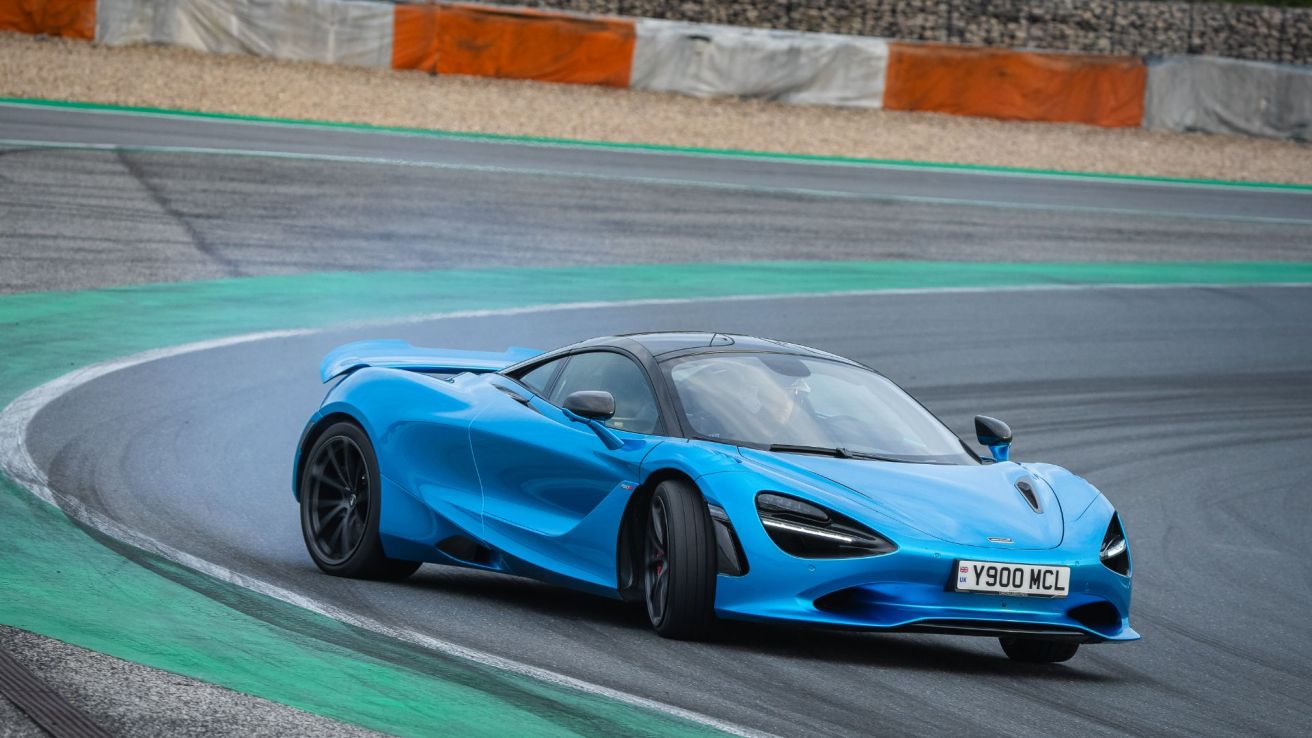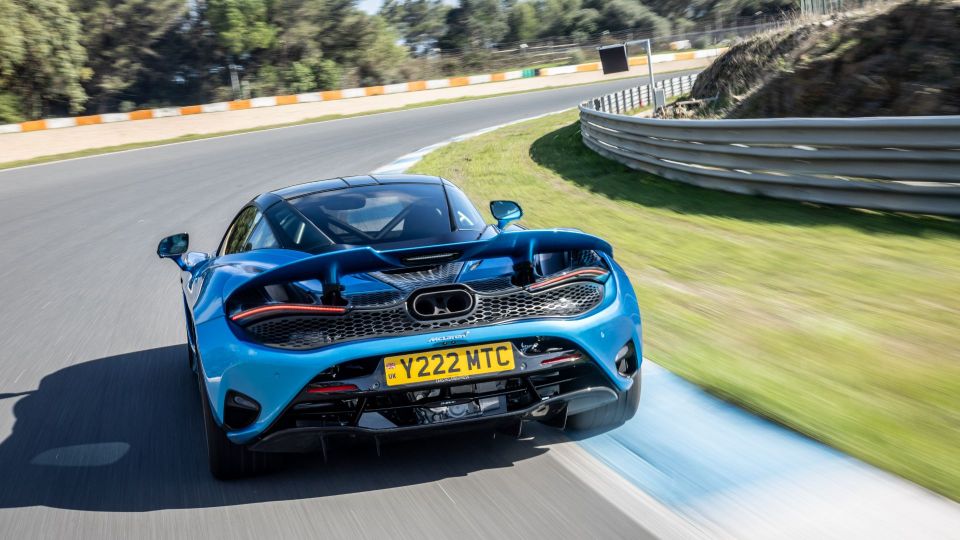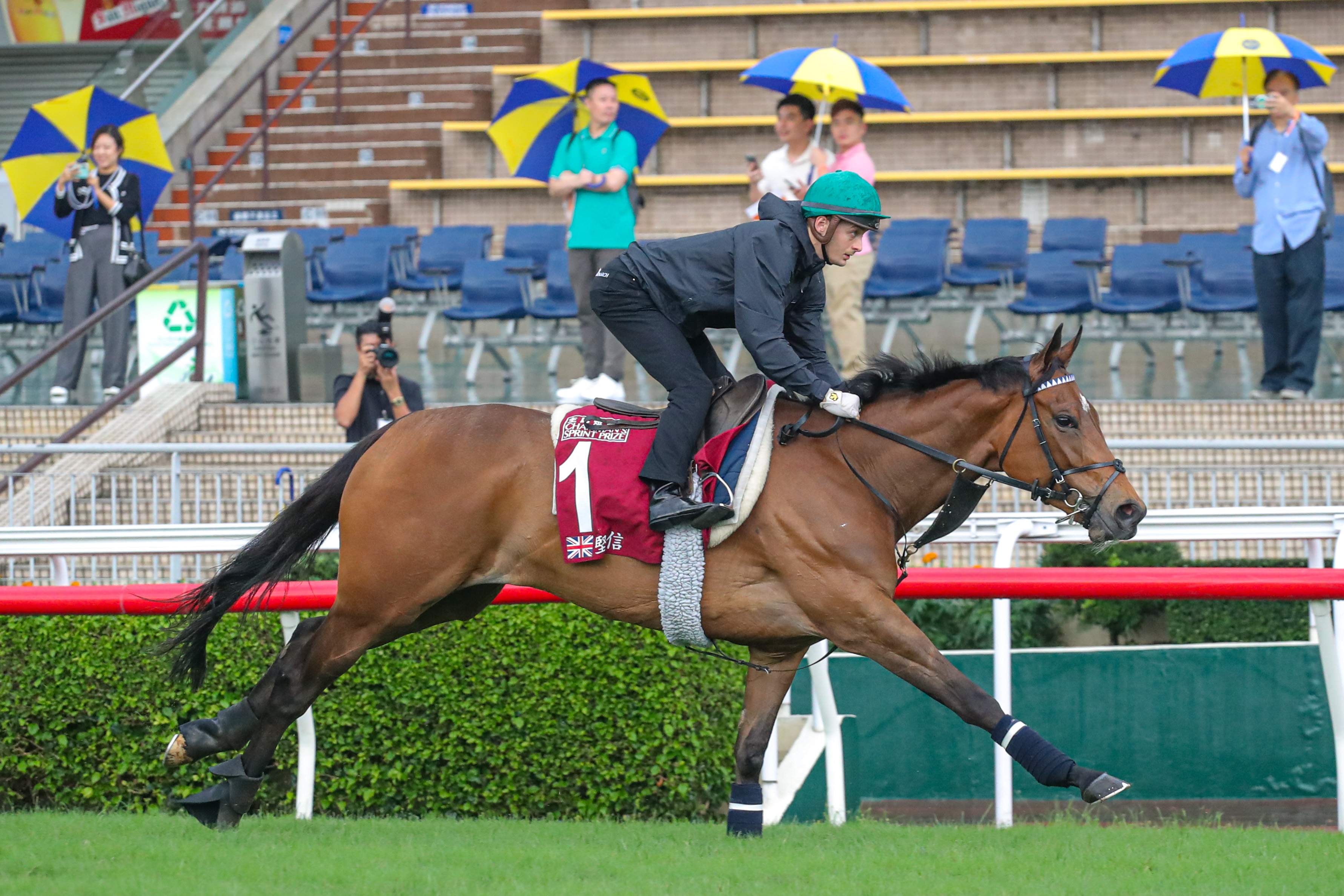McLaren 750S review: new British supercar takes on Ferrari
The McLaren 750S is an intense and intoxicating supercar that rivals the Ferrari 296 GTB. Tim Pitt drives it on the road and track.


“And… brake, brake, brake!” There’s a hint of concern in my instructor’s voice as Curva 1 at Estoril – a third-gear right-hander – looms suddenly large at 170mph. I stamp on the middle pedal and my internal organs compress against the harness belts as F1-inspired monobloc callipers clamp onto huge ceramic discs. If anything, the way the 750S sheds speed feels even more implausible than how it gains it. My brain is struggling to keep up.
If this latest McLaren looks familiar, that’s because it’s a ‘30 percent new’ evolution of the existing 720S. Back in 2017, we hailed the 720S as a new benchmark supercar, but a lot has happened since then. Arch-rival Ferrari launched the plug-in hybrid 296 GTB, for starters, and there is a new electrified enemy within: the McLaren Artura.
With only a 4.0-litre twin-turbo V8 to tax its rear tyres, chief engineer Sandy Holford describes the 750S as “a purist’s supercar”. Peak power of 750hp is 30hp more than its predecessor, thanks to forged pistons, additional boost pressure and a lighter, louder exhaust. McLaren has also shaved 30kg from the car’s weight, with a lightest dry figure of 1,277kg – nearly 200kg less than a 296 GTB.
Get yourself connected

I’ll begin by heading for hills in the 750S coupe, then drive the same challenging route in the drop-top Spider, then finish my day at Estoril. Inside, the McLaren’s dashboard looks a little dated, but I’d take its simple switches over Ferrari’s awful haptic touchpads anyday. The upgraded media system finally offers Apple CarPlay connectivity, too.
Within the first few hundred yards, the new car already feels more alert and intense. In middle-tier Sport mode, throttle response is voracious, the boost beyond 4,000rpm exponentially exciting. Gearshifts via the paddles are brutal and the steering – still hydraulic, now with a quicker ratio – is so precise you can almost think it around corners.
Best of all, the beautifully damped ride of the 720S remains unspoiled. ‘Breadth of ability’ is an overused expression, but the McLaren has it in spades.
Lean and roofless

The 750S Spider is 49kg heavier and arguably a less “purist” choice. However, its carbon fibre structure is equally rigid, and being able to retract the electric hard-top – or simply lower the vertical rear window – does really amplify that new P1-style exhaust. Its sound is harder-edged and less boomy than before, with riotous, Lamborghini-like fireworks when you back off the gas in Track mode.
Track mode is, of course, the default setting when I strap on a helmet and Hans device, then settle into a 750S that is idling angrily in the pit lane.
The McLaren’s dihedral doors, which cut into the roof, make climbing aboard thus-attired far easier, although the deeply sculpted ‘Senna’ buckets (one of three seat options) mean clambering out is less straightforward. This car also wears lightly treaded Pirelli Trofeo R tyres: road-legal, but very much optimised for the track.
Circuit breaker

Estoril last hosted a Grand Prix in 1996 and, frankly, the F1 cars that raced here were scarcely more powerful than a 750S. At the end of the start/finish straight, where I managed 170mph, I’m told McLaren’s development drivers can nudge 190mph.
Still, whether you’re a novice or a Woking class hero, this is a car that breeds confidence and encourages you to push at its limits. Among supercars, its balance and throttle-adjustability are second-to-none.
Would I choose one over a 296 GTB? Yes. While the Ferrari is a more polished package, I simply prefer how the McLaren drives. And over an Artura? I’m not so sure. If you enjoy track days, the 750S is the weapon of choice, but the cheaper Artura is a more rounded road car. Oh, to be in a position to make that choice…
Tim Pitt writes for Motoring Research
PRICE: £243,500
POWER: 750hp
0-62MPH: 2.8sec
TOP SPEED: 206mph
FUEL ECONOMY: 23.2mpg
CO2 EMISSIONS: 276g/km



